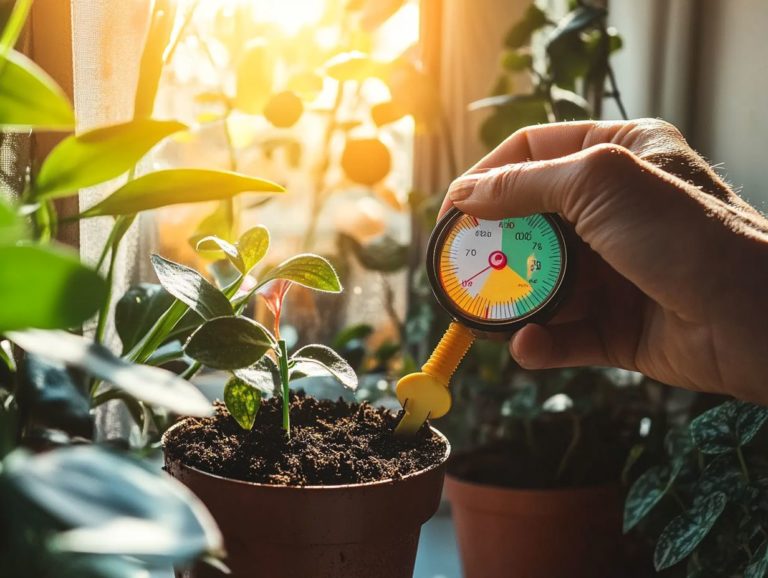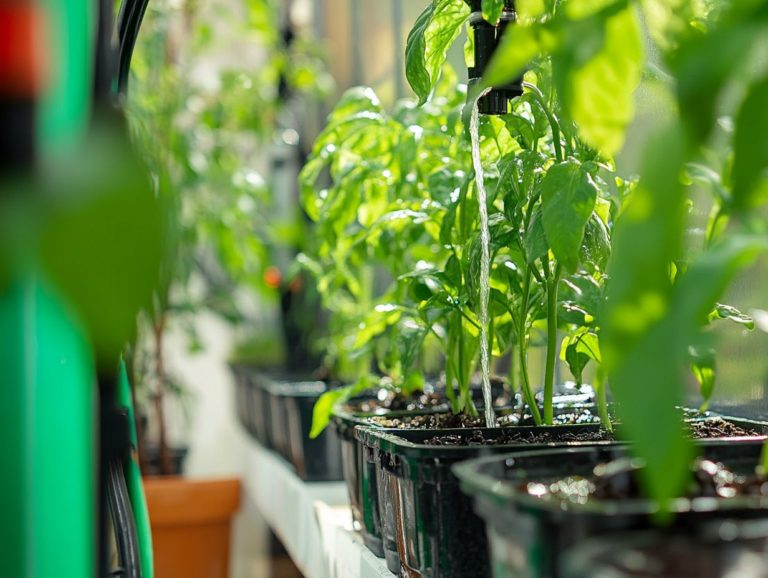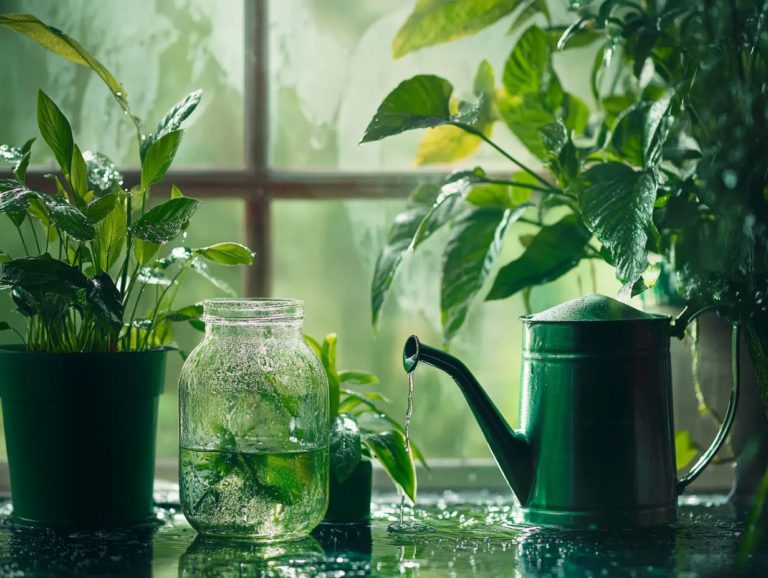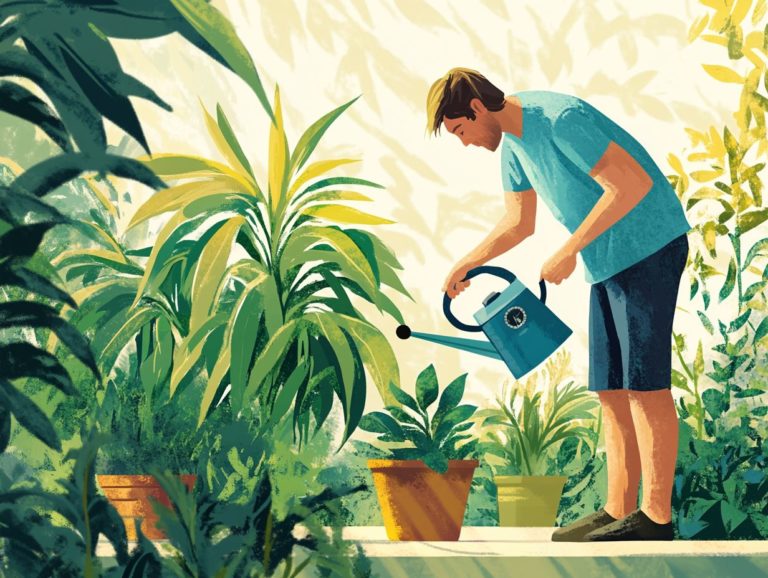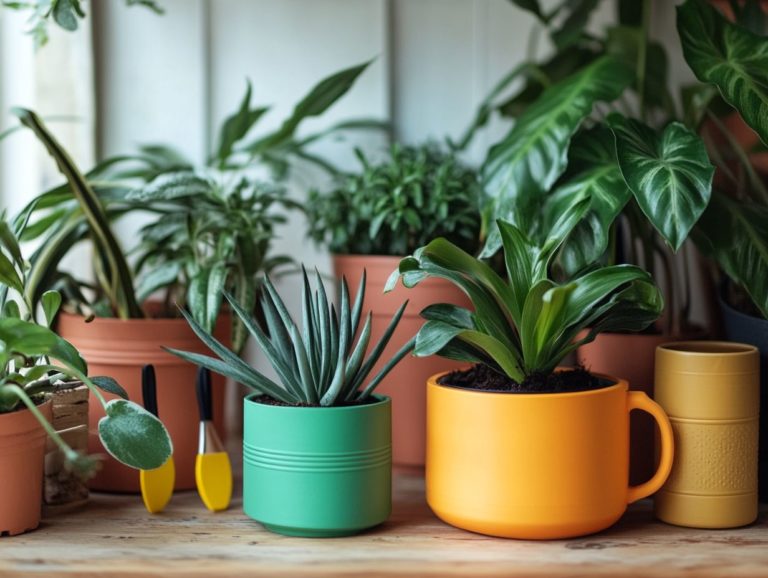Understanding Root Rot and Watering Practices
Root rot can truly be a gardener’s worst nightmare, quietly undermining the health of your beloved plants. Typically stemming from overwatering or inadequate drainage, this condition results in soft roots that can spell disaster for your greenery.
This guide will empower you to conquer root rot with confidence! You ll discover treatment methods for infected plants and understand the vital connection between your watering practices and overall plant vitality.
Arm yourself with the knowledge to ensure your plants not only survive but thrive!
Contents
Key Takeaways:
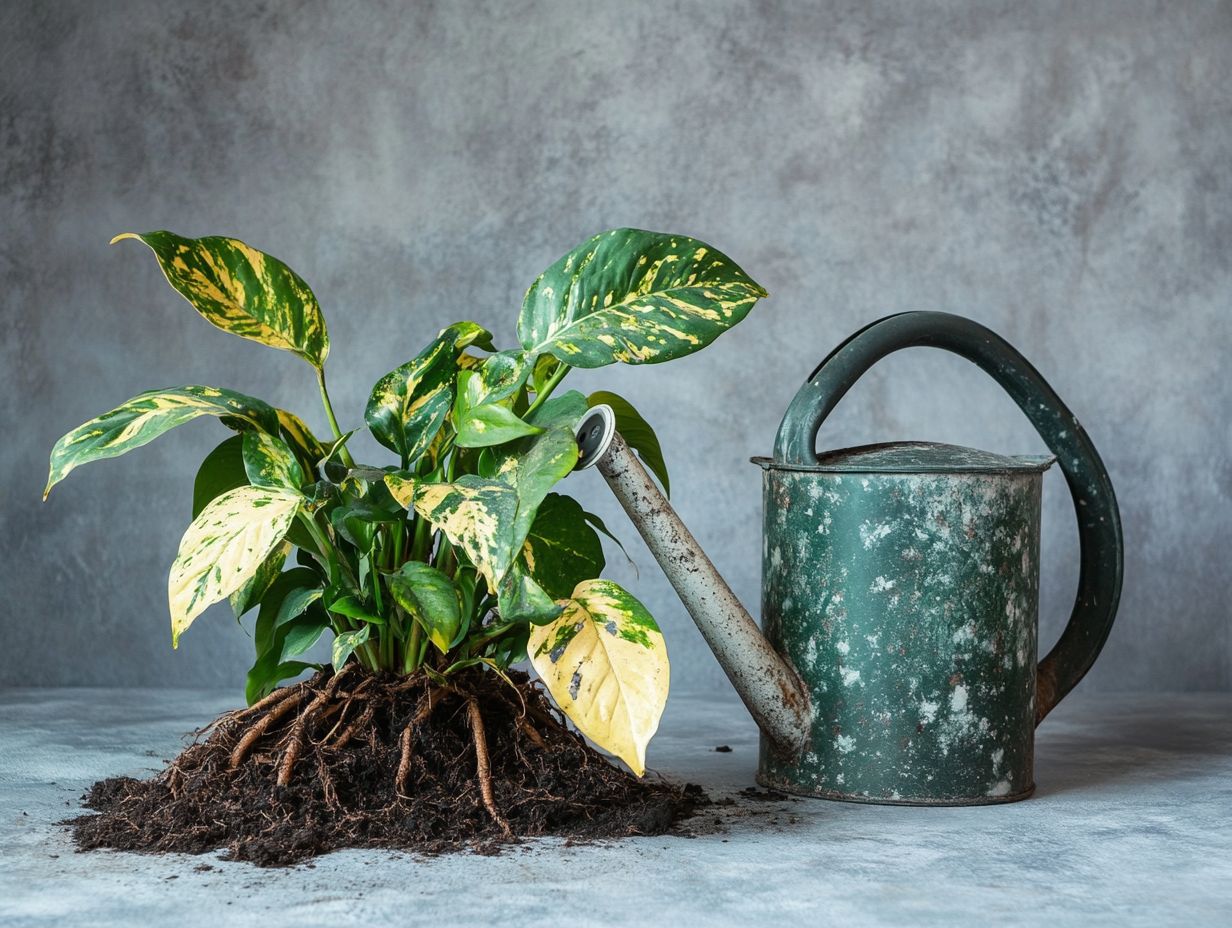
- Understanding what root rot is and its causes is crucial in preventing and treating this common plant disease.
- Proper watering techniques, such as avoiding overwatering and ensuring proper drainage, can help prevent root rot and promote plant health.
- Regularly monitoring and addressing visual signs of root rot, as well as implementing other preventive measures, can help maintain the overall health and vitality of your plants.
What is Root Rot?
Root rot is a significant fungal disease an illness caused by fungi that can afflict a range of plants, from beloved houseplants like peace lilies and snake plants to garden staples such as tomatoes, peppers, and roses.
This affliction typically arises when there s an overabundance of moisture in the soil, resulting in soft, weakened roots that struggle to absorb essential nutrients. The primary harmful organisms behind root rot are Pythium, Fusarium, Phytophthora, and Rhizoctonia, which flourish in poorly drained soils.
Their presence can profoundly compromise plant health by disrupting root systems, making vigilance crucial for any gardener or plant enthusiast.
Definition and Causes
Root rot is a troubling condition where plant roots begin to decay due to various fungal organisms, with notorious culprits like Pythium, Fusarium, Phytophthora, and Rhizoctonia leading the charge. This issue primarily stems from excess moisture in the soil, which hinders nutrient absorption and ultimately leads to a decline in plant health.
The interaction between these harmful organisms and environmental conditions can create a perfect storm for plant deterioration. Poor soil drainage and consistently high moisture levels foster an environment in which these fungi thrive.
Without adequate air circulation in the root zone, oxygen levels drop, and your plants can weaken even more. Over-watering practices and compacted soil often play a significant role in this scenario, especially affecting indoor plants.
Stress factors such as insufficient light and nutrient issues can worsen the situation, highlighting the need for you to keep a close eye on your plants.
Act now to understand and tackle these issues for thriving plants!
Symptoms of Root Rot
Identifying the symptoms of root rot is essential for preserving the health of your plants and ensuring prompt intervention to avert further damage.
Key indicators to watch for include yellowing leaves, wilting foliage, and stunted growth. These signs suggest that the roots are struggling to support the plant, often due to infection.
Being vigilant about these symptoms can make all the difference in your plant’s vitality.
Identifying and Addressing Signs
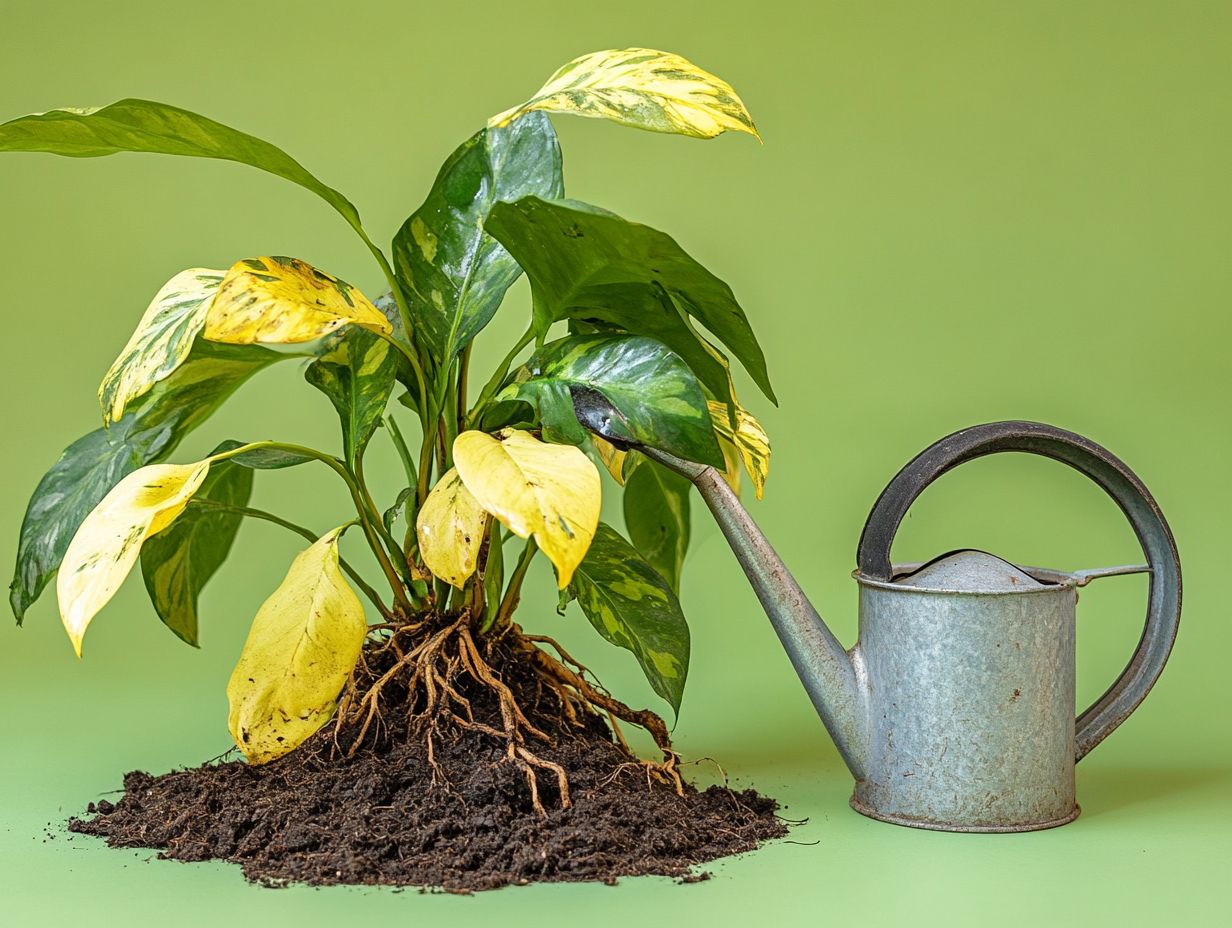
Identifying and addressing the signs of root rot without delay can save your plants, including garden plants and container plants, from significant damage. By keeping an eye out for symptoms such as yellowing leaves and wilting, you can determine whether root rot is lurking and decide on the appropriate treatment methods.
Early detection is paramount. It enables you to take timely action to restore the health of your affected plants. Monitoring damp soil conditions, which often contribute to root rot, is essential. Ensure that your pots and beds have proper drainage to prevent water accumulation.
If you notice any signs, take a moment to inspect the root system carefully. Healthy roots should be a bright and healthy-looking white or light tan, while decayed roots typically appear brown or black and feel mushy.
Immediate intervention may involve repotting the plant with fresh, dry soil. You might also consider applying medications that fight plant diseases to combat any fungal pathogens. By implementing these steps, you can significantly enhance your plants’ chances of recovery and maintain their vitality. Act fast to save your plants!
Preventing Root Rot
Preventing root rot is crucial for the longevity and vitality of your indoor and outdoor plants. To effectively safeguard against this issue, adopt proper watering techniques and select soil that encourages drainage. Remain vigilant about overwatering.
This is especially important for container plants, which are particularly susceptible to root rot due to their limited drainage holes. Your attention to these details will help ensure your indoor and outdoor plants thrive!
Proper Watering Techniques
Implementing proper watering techniques is essential for preventing root rot and nurturing healthy roots in your plants. To maintain an optimal environment, closely monitor soil moisture levels to avoid excess moisture, which can lead to fungal infections that compromise root systems.
A simple yet effective method is to use your finger to check the top inch of soil. If it feels dry, it’s a clear signal that it s time to water. For plants with varying needs, adjusting the watering frequency is crucial. For example, succulents prefer infrequent watering, while tropical plants thrive with more consistent moisture.
Consider incorporating a moisture meter for more precise readings, helping you steer clear of both under and over-watering. Keep an eye on your plant s leaves droopy or yellowed leaves can indicate that it s time to reassess your watering habits. By understanding these nuances, you can significantly enhance the health of your plants.
Other Preventive Measures
Along with proper watering, you can take several preventive measures to significantly reduce the risk of root rot in your plants. Using the right gardening tools, ensuring your containers have adequate drainage holes, and incorporating organic matter or compost into the soil can greatly enhance both soil health and drainage.
With tools ranging from trowels to soil aerators at your disposal, you can create optimal conditions for robust root development. Those drainage holes are essential they prevent water from pooling at the bottom of pots, which can suffocate roots and lead to disaster. Without these crucial openings, excess moisture can become a breeding ground for harmful pathogens.
Incorporating organic matter or compost not only enriches the nutrient profile of your soil but also improves its structure and aeration, fostering a balanced ecosystem. By integrating these strategies, you can cultivate a flourishing garden while effectively mitigating the threats posed by root rot.
Treating Root Rot
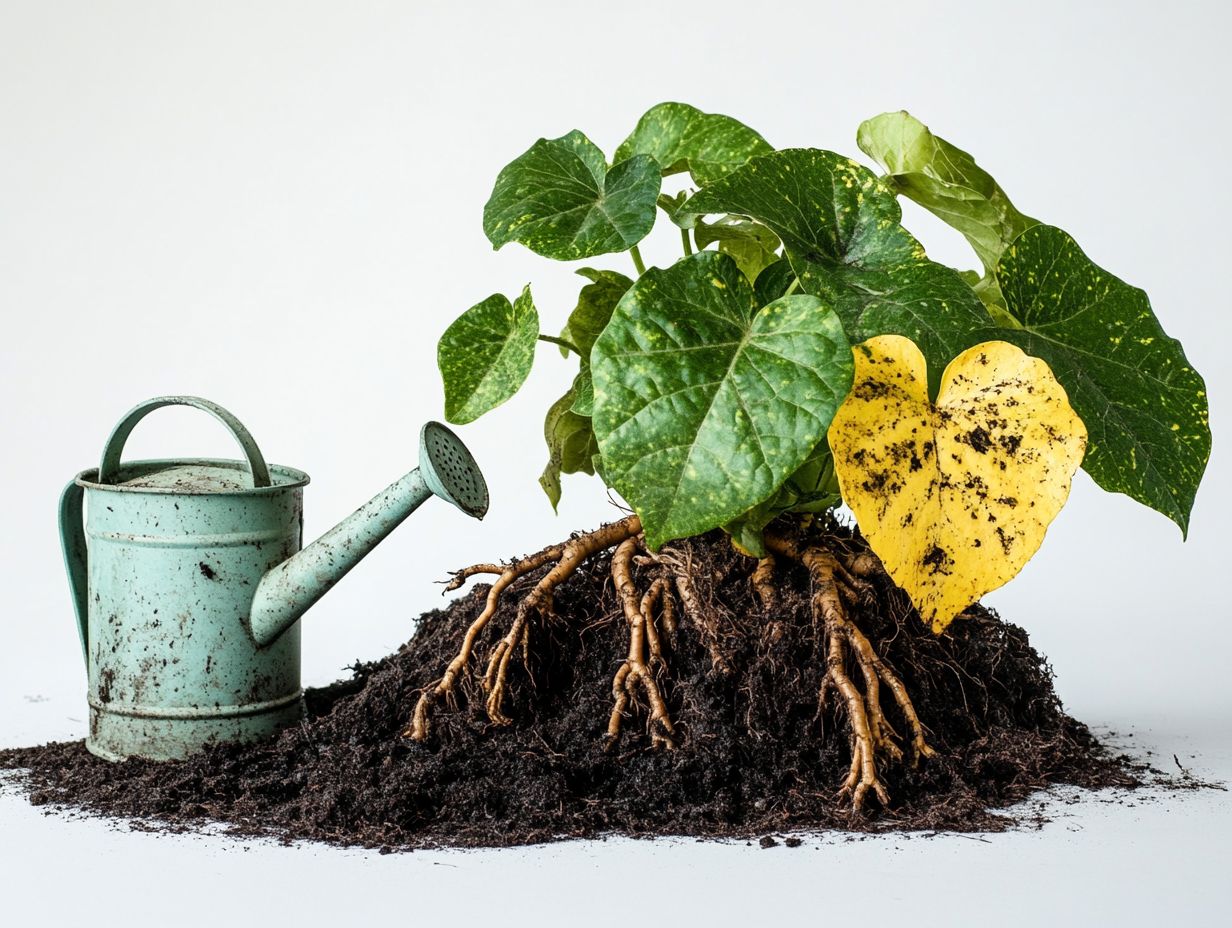
Effectively addressing root rot demands a strategic blend of chemical and non-chemical approaches to revitalize your affected plants. Start by gently removing the plant from its container and carefully inspecting the roots for any soft spots.
Before starting, put on gardening gloves to protect your hands while carefully inspecting the roots. This meticulous attention to detail will set the stage for your plant s recovery. Take these steps today and watch your plants thrive!
Methods for Treating Infected Plants
When dealing with root rot in your infected plants, including houseplants like peace lilies and snake plants, you have several effective treatment options. A common method is to use a bleach solution to sanitize your tools. After that, repot the plant with fresh soil while applying products that kill harmful fungi to tackle the infection.
It’s crucial to ensure your plant has proper drainage. Excess moisture can make the problem worse. Start by examining the root structure and trimming away any discolored or mushy roots.
Once you’ve sanitized your tools with a diluted bleach solution typically one part bleach to nine parts water you can then apply an appropriate fungicide. Make sure to follow the manufacturer’s instructions for dosage and frequency.
Remember to wear gardening gloves during this process! They protect your hands from contaminants and help prevent the spread of pathogens to healthy plants.
Follow these steps to boost your plant’s health fast!
Impact of Watering Practices on Plant Health
The influence of your watering practices on plant health is significant. Improper techniques can lead to complications like root rot, severely affecting nutrient absorption.
Grasping the balance between providing adequate water and preventing excess moisture is crucial for ensuring your plants thrive.
How Watering Affects Plants
Watering practices have a remarkable influence on plants, shaping their overall health, nutrient absorption, and growth patterns. Appropriate watering keeps your plants from wilting and helps mitigate the risk of stunted growth linked to root rot.
The method you choose whether drip irrigation or traditional hand watering can significantly affect nutrient absorption. Overwatering can drown your soil, limiting oxygen availability and inviting root rot. On the other hand, underwatering can stress the plant, restricting its ability to absorb vital minerals.
Both extremes can lead to signs like wilting and leaf drop, resulting in poor growth and vitality. By ensuring a balanced watering regimen, you facilitate optimal nutrient uptake, allowing your plants to thrive.
Frequently Asked Questions
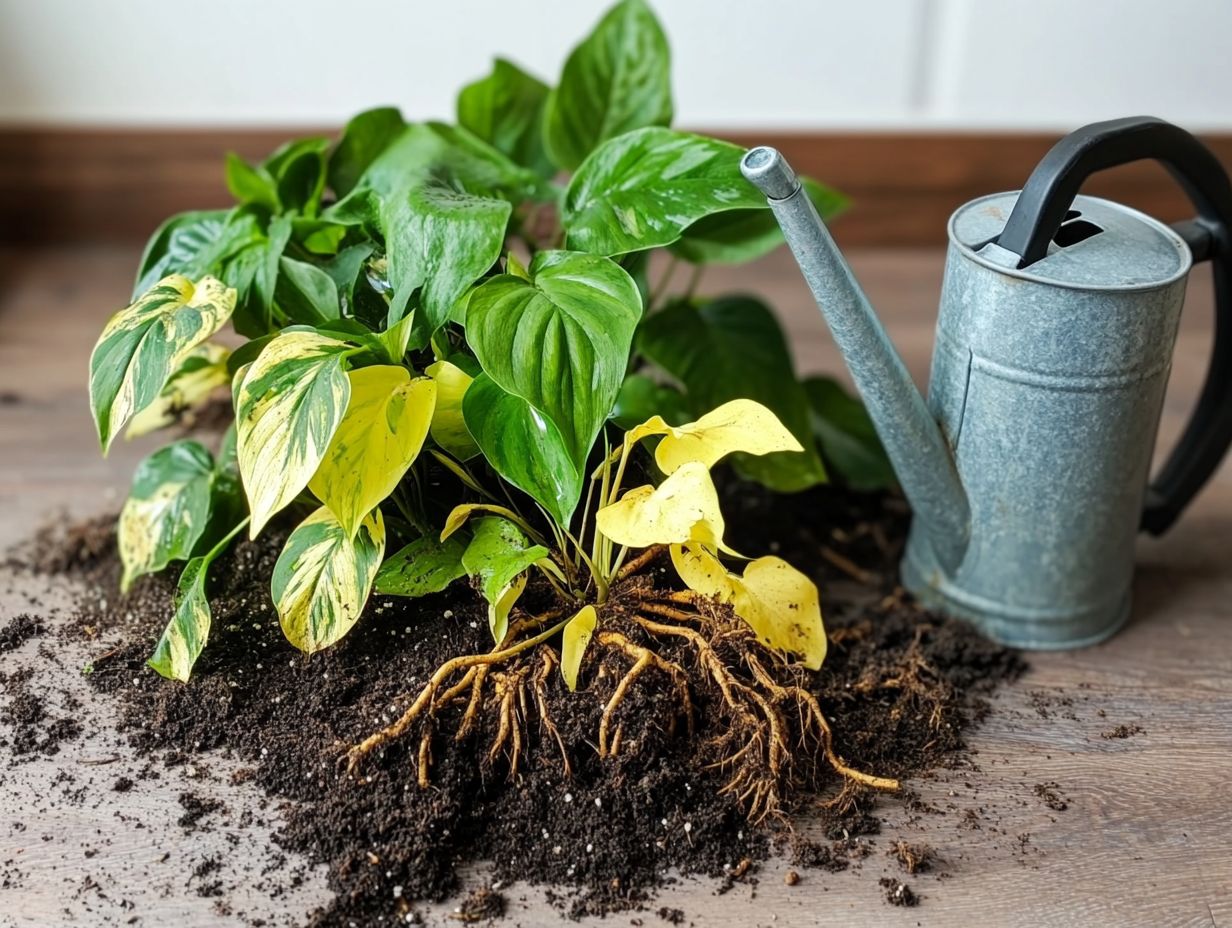
-
What is root rot and how does it affect my plants?
Root rot is a fungal disease that affects the roots of plants, causing them to decay and ultimately leading to death. It is commonly caused by overwatering or poor drainage.
-
How can I prevent root rot from occurring in my plants?
The best way to prevent root rot is to avoid overwatering and ensure your soil has proper drainage. Allow the top inch of soil to dry out before watering again, and use pots with drainage holes.
-
Can root rot be treated or reversed?
In early stages, root rot can sometimes be treated by adjusting watering practices and improving drainage. However, once the disease has progressed, it is difficult to reverse and may lead to plant loss.
-
How do I know if my plant has root rot?
Common signs of root rot include yellowing or wilting leaves, stunted growth, and a foul odor from the soil. You may also see black or brown, mushy roots when you remove the plant from its pot.
-
Can root rot spread to other plants?
Yes, root rot can spread to other plants if they are close together or watered with contaminated water. It is important to isolate any plants showing signs of root rot and avoid using the same tools on healthy plants.
-
How often should I water my plants to prevent root rot?
The frequency of watering depends on factors like plant type, pot size, and climate. It’s generally recommended to water when the top inch of soil is dry, while also considering soil drainage.
Start applying these tips today to ensure your plants thrive!

